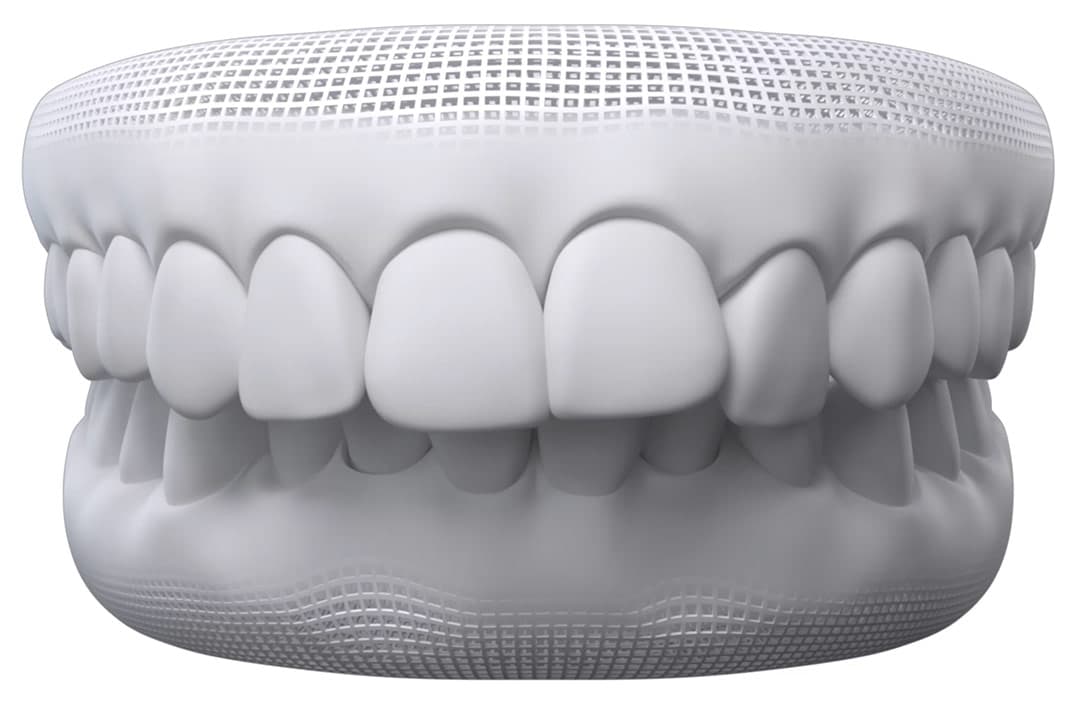What is an overbite?
An overbite is when the upper front teeth cover more of the lower front teeth than would usually be considered ‘ideal’. Dentists refer to overbite teeth as a type of malocclusion. Other types of malocclusions include underbites, crossbites and gap teeth (diastema).
Overbite causes and symptoms
Infants and children
According to the American Academy of Paediatric Dentistry, if a child repeatedly sucks on a finger, thumb, dummy or another object (such as a bottle) over a prolonged period, the upper front teeth may tip forward or not come in properly. Changes in tooth position and jaw alignment can also occur.
Adults
In teenagers and adults, a deeper than normal overbite would usually be the result of an underlying jaw issue or potentially missing teeth on the lower dental arch.
Why correcting an overbite is important
As well as transforming protruding teeth into a confident smile, overbite correction may prevent a range of health and dental problems, including:
damaged gums
tooth wear and tear
jaw aches and headaches
opening, chewing and biting difficulties
speech problems
sleep apnoea.
Common Overbite Cases
What is considered a normal overbite?
A normal overbite or ideal bite is when your upper incisors cover approximately ⅓ to ½ of your lower incisors. Normal front teeth overbites would not usually require treatment. However, if you're concerned about a slight overbite or protruding teeth, contact an experienced Invisalign doctor to see if you're a good candidate for Invisalign treatment.
What is a severe overbite?
A severe overbite is when the overbite is little or large enough that you experience aesthetic concerns and have overbite symptoms such as teeth wearing. These are the types of overbites that may cause future problems.
An excessive or large overbite, also called a deep bite, can be fixed using Invisalign clear aligners. Your experienced Invisalign doctor will be able to discuss treatment costs and show you how an Invisalign treatment can successfully help address adult and teen overbites.
How to fix an overbite
Available overbite treatment methods
A normal overbite or ideal bite is when your upper incisors cover approximately ⅓ to ½ of your lower incisors. Normal front teeth overbites would not usually require treatment. However, if you're concerned about a slight overbite or protruding teeth, contact an experienced Invisalign doctor to see if you're a good candidate for Invisalign treatment.
Invisalign treatment for overbite correction?
Invisalign clear aligners can correct an overbite or deep bite by moving the teeth. Treatment time can be around 12 to 24 months, depending on your case.
Tooth extraction
Removing extra teeth from an overcrowded mouth enables other teeth to move into place easily, which may be required when treating severe overbites.
Braces and other orthodontic devices
Metal braces can be used for overbite correction with the treatment process usually lasting one to two years.
Overbite correction surgery
Adult skeletal overbites may require surgery to reposition the jaw bone. This treatment is not suitable for children as they are still growing.
How to fix an overbite naturally
Can you get rid of an overbite without braces? Quite simply, 'no'. If you try to naturally fix overbite teeth at home, you risk causing irreversible damage.
Can Invisalign treatment fix an overbite?
Yes, Invisalign treatment has delivered millions of satisfied smiles worldwide, many of which were Invisalign treatment overbite cases.
The advantages of Invisalign treatment over braces for overbite correction
Invisalign clear aligners are virtually invisible and can give you all the amazing benefits of traditional braces without the look of metal brackets and wires. The cost of Invisalign treatment is comparable to braces at some practices.
With Invisalign treatment for overbite correction you could benefit from:
Effective gradual teeth movement with less pain.1
Freedom to easily remove your Invisalign aligners.
Fewer doctor visits than traditional braces.2
An indication of the duration of your treatment thanks to your individually mapped digital treatment plan.
Better oral health because you can remove your aligners to brush and floss.
Mandibular advancement - a great way to fix overbites in teens with precision wings that gradually move the lower jaw to improve the bite and appearance of the chin.
To begin the journey towards overbite correction with Invisalign treatment, follow these three simple steps and unlock your best smile:
Take the Invisalign Smile Quiz to see if our Invisalign treatment for overbite correction is right for you.
Use our easy search tool to find a doctor near you and request an appointment with our Invisalign Smile Concierge team.
Start the Invisalign treatment process with the world's most advanced clear aligners.



